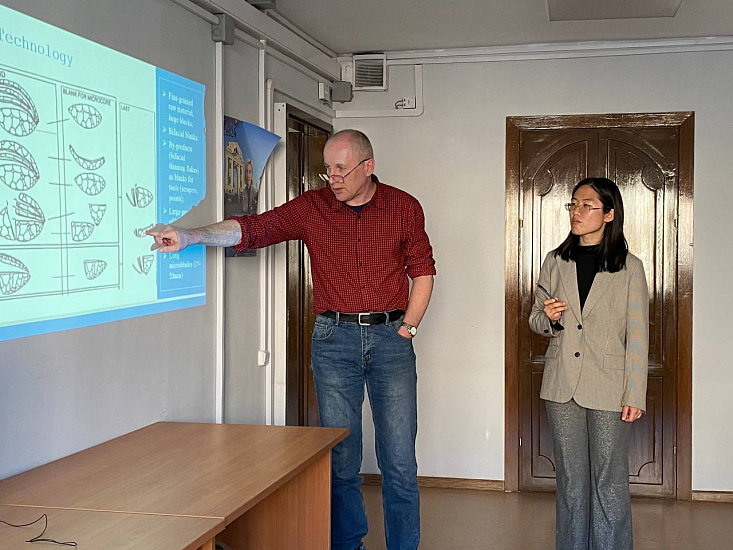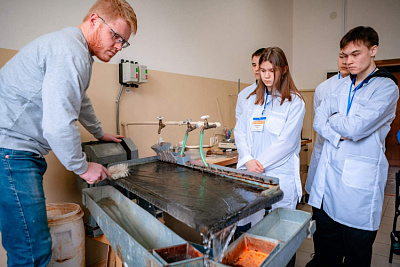Yue Feng, a Peking University Employee, Gave a Lecture at INRTU on Archaeological Monuments in North China
Yue Feng, a staff member of the School of Archaeology and Museology of Peking University, gave a lecture at INRTU on April 2. The guest talked about artifacts characterizing technology, climate, life and migration of the population of northern China in the period from 40 to 8 thousand years ago.

Yue Feng, who holds a Ph.D. degree, visited INRTU at the invitation of Alexei Tetenkin, technical director of the Research Laboratory of Archaeology, Paleoecology and Life Systems of the Peoples of North Asia. The purpose of the lecture - to familiarize the interested audience with the monuments of North China, the earliest of which are dated back to 40-20 thousand years ago.
Using archaeological finds as an example, Yue Feng showed climate changes marked by transitional events, lifestyle and population migrations within large areas. The paper focuses on the history on the eve of the Last Glacial Maximum (LGM).
According to Yue Feng, there was an early technology for preparing 30-50 mm wide chips for making end scrapers and incisors. The method was standardized with the possibility of changing plates and splinters. Tool handles were made of bone or animal horn. This technology was replaced by the method of making micronuclei (stone cores).
The representative of Peking University also told about five stages of formation of microplate technology of splitting stone raw material. At first, microplates were made from prismatic cores and combined with detritus obtained with a chipping tool. Microplates were used as blanks for side scrapers and cutters, composite blades - inserts in bone sheaths - spearheads and knives. Archaeologists also attribute seed grinders to this period as evidence that people were engaged in gathering in addition to hunting.
In the second stage, the cores have a navicular shape and the length of the microplates is 10 mm.
The peculiarities of this period are the growth of the population, as evidenced by the discovery of several campfires in one place, and the expansion of flora and fauna.
The chronology of events shows that later people used voluminous volcanic rocks and pressed microplates 1.5-2 cm long. The toolkit was dominated by bifaces (two-sided, double-edged stone knives) and unifaces (tools made of split pebbles with a coating on one surface). With more durable objects, people in northern China began to hunt large animals, including horses and elephants.
The subsequent stages are characterized by the development of communication and the transition from a nomadic to a sedentary lifestyle. People again used rook-shaped cores and also practiced making pencil-shaped forms. At the same time, about 15 - 14 thousand years ago, ceramics and other more complex materials were in circulation, from which the representatives of the epoch made animal figures - early examples of culture and creativity.
The discussion of Yue Feng's report was attended by INRTU representatives and Irkutsk State University.
Photo by INRTU press-service







